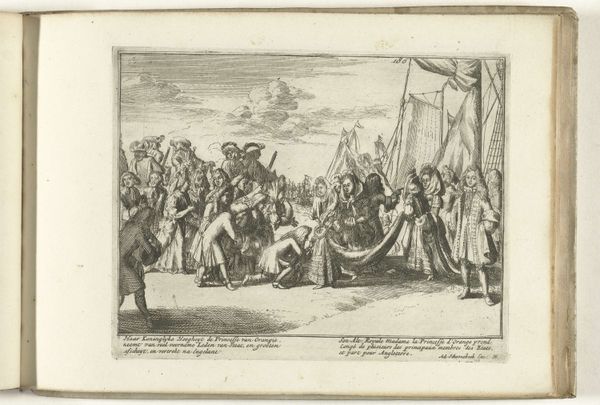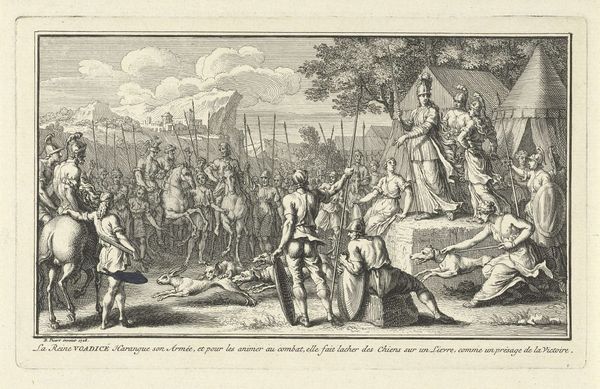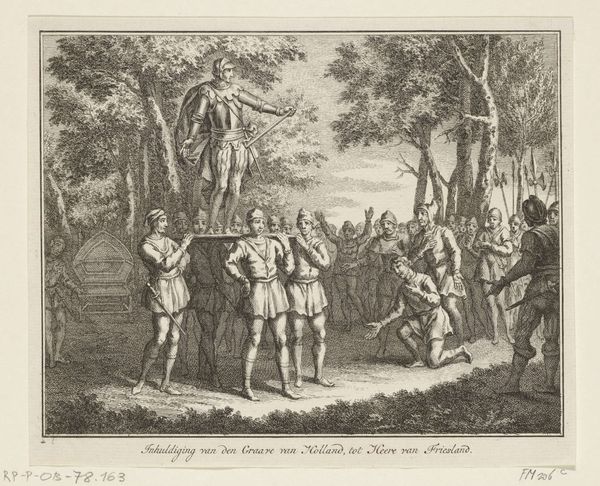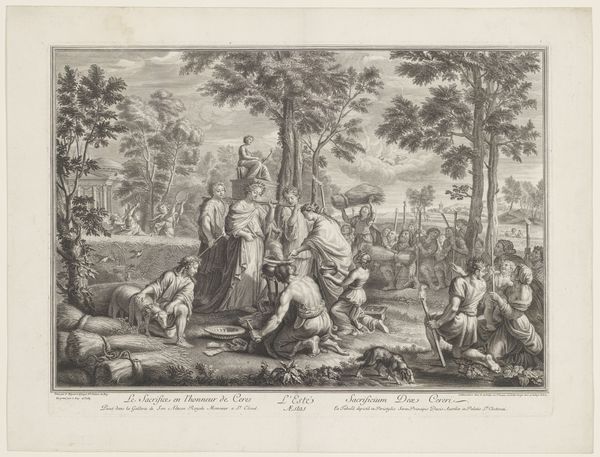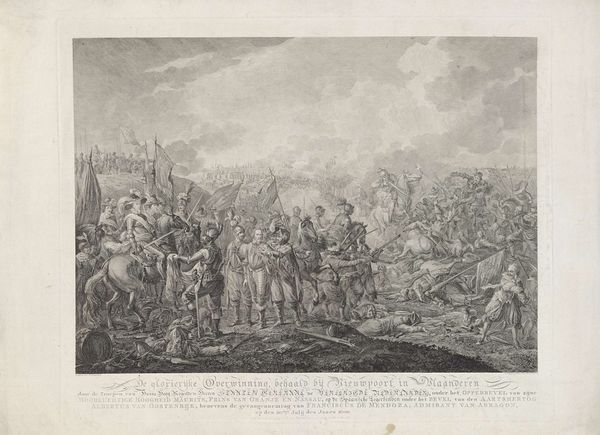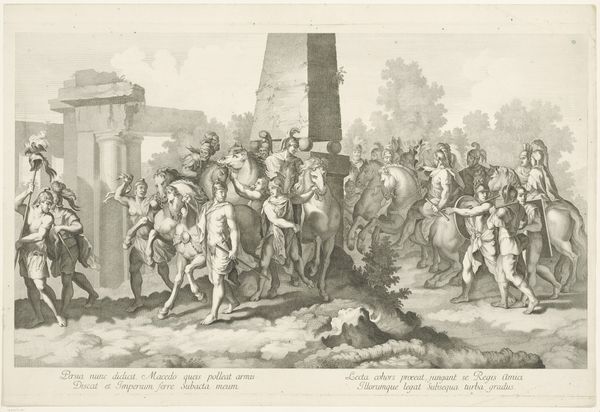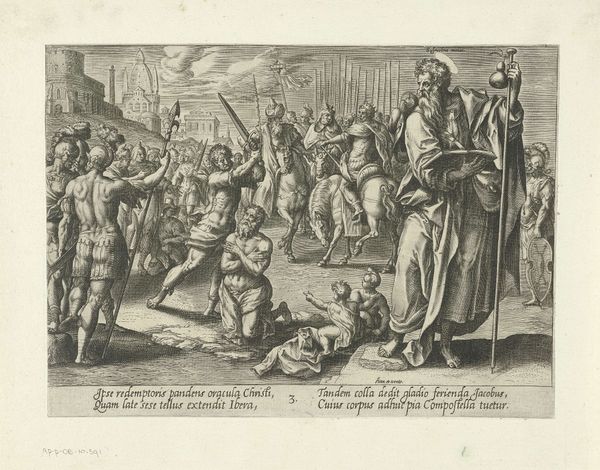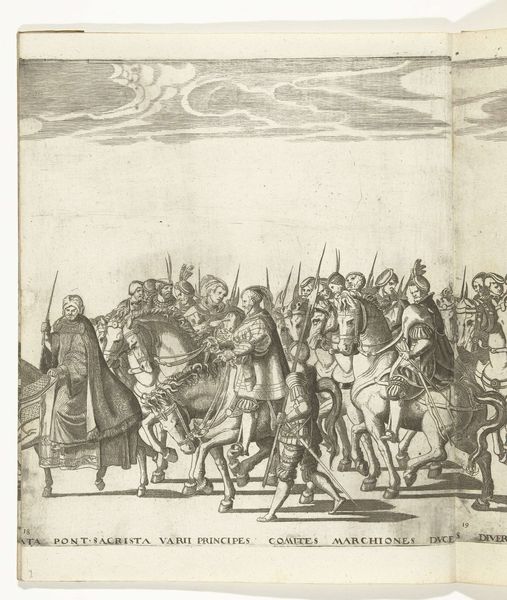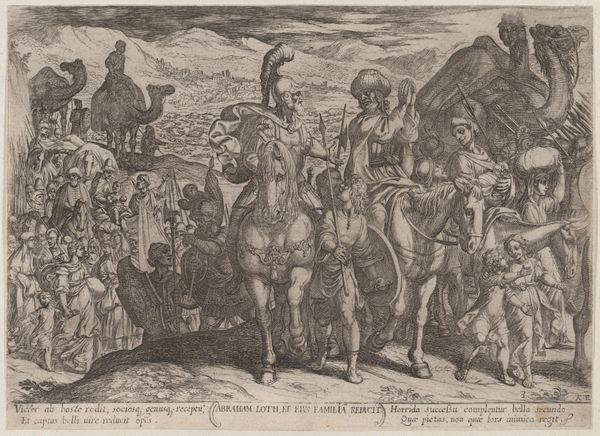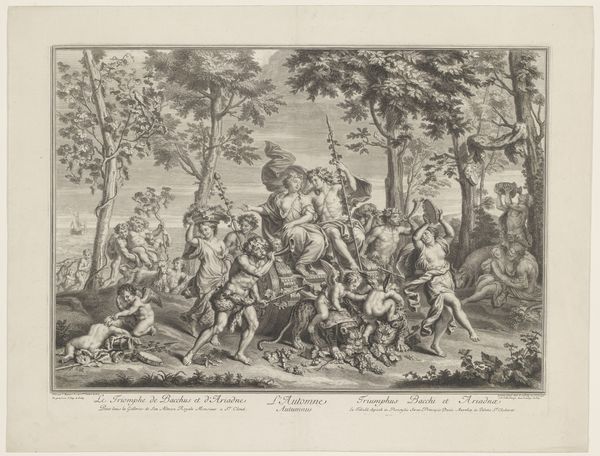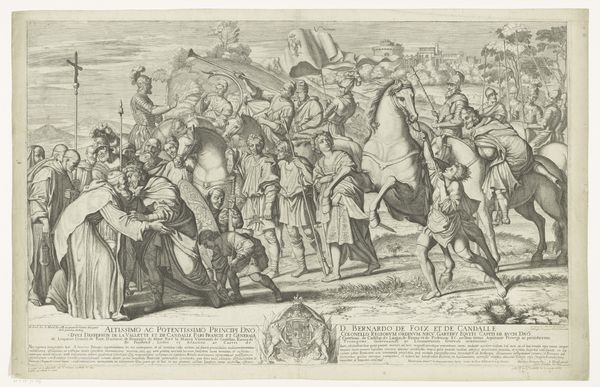
print, engraving
#
allegory
#
narrative-art
#
baroque
# print
#
history-painting
#
academic-art
#
engraving
Dimensions: height 655 mm, width 960 mm
Copyright: Rijks Museum: Open Domain
Editor: This engraving, titled "Militaire stoet met oorlogsbuit" which translates to "Military procession with spoils of war", by Domenico Rossetti, somewhere between 1660 and 1736, feels very performative. The figures are deliberately posed, and the architecture seems almost like a stage set. What can you tell me about it? Curator: The procession indeed reads as a constructed display. Domenico Rossetti, working within the conventions of baroque and academic art, utilizes the language of allegory and history painting to make a statement. Consider the power dynamics inherent in displaying war booty: what message is conveyed through such public spectacles, and who is meant to receive it? Editor: It feels like the artist is making a very particular statement, but it’s hard to grasp its specific meaning now. Is it glorifying military success or something else? Curator: Exactly, it's critical to think about this engraving as a mediated image designed to influence public opinion. Consider where this print would have been displayed and circulated. How does its accessibility, as a reproduced image, amplify or change its message compared to a unique painting? What did triumph mean to Rossetti’s audience? Editor: So, by depicting this military parade in a widely distributed print, Rossetti's playing a role in shaping a very public narrative about victory and power? I hadn’t considered the impact of it being a print! Curator: Precisely! Prints like this were powerful tools for disseminating ideas and constructing a collective understanding of historical events. The formal qualities, the dramatic arrangement of figures, contribute to a calculated performance of dominance for a specific contemporary political end. Editor: I never really thought about the political messaging in what seems, on the surface, a scene of victory. This gives me a new perspective on engravings and their place in shaping historical narratives! Curator: And understanding that is crucial to unraveling art’s complex relationship to power. The public role of art, even in something as seemingly straightforward as a celebratory procession, is always politically charged.
Comments
No comments
Be the first to comment and join the conversation on the ultimate creative platform.

